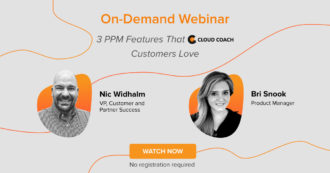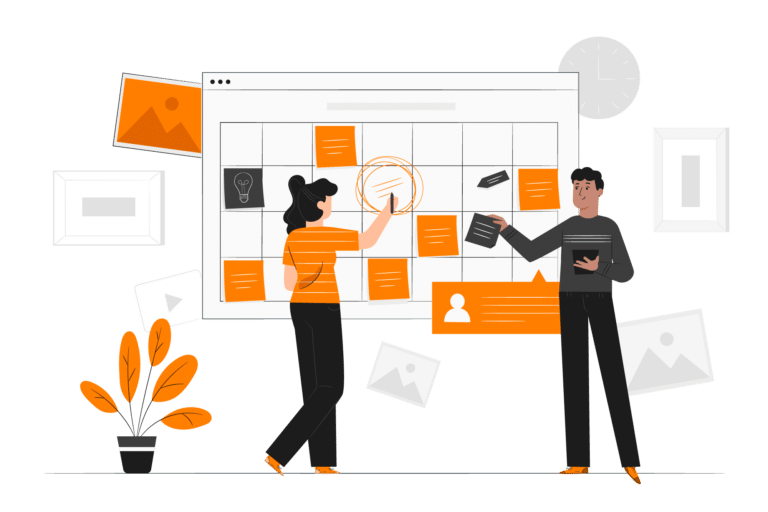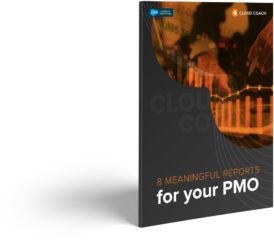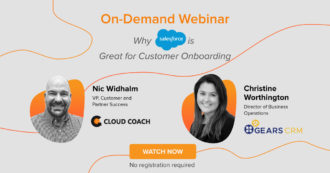 Webinar
Webinar
- Solutions
- Customer Onboarding
- Customer Success
- Professional Services Automation
- Project Management
- Project Portfolio Management
-
Solutions
-
Features
- Why Cloud Coach
- Customers
-
Resources

The term “customer success” is a relatively abstract concept—there’s no tangible thing that defines what it is or what it looks like.
Depending on your business, customer success can mean and look like different things. For example, for some, it looks like a customer who is using your product or service for its intended purpose. For teams looking to find meaningful customer success, as mentioned previously, you need to measure customers’ outcomes as a result of using their services and keep going from there.
This version of the customer success journey is especially true for B2B (SaaS) business models. So what does that journey look like in detail? We’ll break it down into the different stages of the overall customer journey.
Buyer's Perspective
Before the customer even navigates to your website, they might have heard about your business through a recommendation (endorsed or otherwise). If they see or hear other people positively talking about your business, they’re likely to feel the effects of social proof.
The more social proof the customer sees, the more likely they are to at least become curious about your business and make decisions about potential purchases.
Purchase
Your sales and marketing efforts have persuaded the customer, and at this point, they are comfortable making a purchase or signing up for a trial of your product/service. Customer success here means they can make that purchase or sign up as frictionless as possible.
Onboarding
Depending on the nature of your business and who you’re targeting in your marketing, the customer might experience different types of onboarding. At a minimum, the customer should immediately be able to start using the product or service with a quick guided tutorial available.
Though another common practice is having an onboarding email sequence that staggers your best tips and tricks for making the most out of your services.
Another less common (but powerful) method of onboarding is the human touch—setting up an onboarding call to personally guide the new customer through the product or service, giving actionable tips along the way. For example, the email client Superhuman is well-known for its stellar onboarding practices—primarily using this latter method of personal onboarding calls.
The customer will feel a degree of success if they feel they can start using the product or service with confidence.
Adoption/Retention
After initially using your product/service, the customer will begin to form opinions about whether or not they want to continue using it after the trial (if applicable) or renew it for continued use.
This stage is critical from both the customer and business perspectives. If the customer isn’t finding the value they initially sought, chances are they won’t renew or buy from your business again. If they only use it once or briefly and never come back, they weren’t successful with your product or service.
However, if they are finding value—e.g. It’s helping them solve a problem within their business or improving a process to be more efficient, then they are more likely to be experiencing customer success.
Another element of customer success here is if the customer does run into problems with using your service, they are quickly able to resolve the issues with a self-service knowledge base or excellent customer support.
Cross-sell or upsell
Great news, the customer has been using your service to a point where they may have outgrown their current plan. Although they have already been successful with adopting your services, they could potentially get even more value by upgrading their plan and experience even more success.
Brand advocacy
As the customer continually experiences success with your service, they’re likely to at least recommend your business to people they know who might be looking for the same solutions.
However, having experienced the degree of success they hopefully have, they may also turn into full-fledged brand advocates—someone who will make an effort to recommend your product or service to lots of people, friends, and strangers alike.
This stage helps to enable the cycle to continue with new customers as they hear about your existing customer’s great experiences.
ADDITIONAL LINKS
Business’ perspective
Before initial purchase
From the business perspective, setting up a customer for success often means making sure they have enough information available to help them decide if your product or service is the right fit for them before they purchase. Poor fit is likely to lead to churn later on.
Having the right information on your website can include robust FAQs, pricing, testimonials, and demo pages (if applicable).
Purchase
As mentioned, making the point of purchase or sign-up as frictionless as possible is key to customer success at this stage. In cases of purchase, this can mean having plenty of payment options available so the customer can use their preferred method of payment.
In terms of trial periods or free account sign-ups, this can involve collecting the right amount of information to set up their accounts (i.e. too much information can put people off, and not enough can mean difficulties identifying the customer later on).
Onboarding
Deciding what type of onboarding is more likely to lead to customer success in this area can take some time and experimentation. For instance, Superhuman (the email client mentioned earlier) requires customers to set up an onboarding call with a team member as part of the process—which seems to work for them.
However, this method might not suit your target customers and they could prefer an email sequence or a simple on-screen tutorial upon first creating their account. Don’t be afraid to try each method, seek feedback, and learn from there what works best for your customers. What works for other businesses might not work for yours, and vice versa.
Adoption/retention
While new customers begin to integrate your product or service into their lives, it’s important to monitor their usage appropriately. One of the more passive ways to figure out if you’re encouraging customer success is to keep tabs on your customer support tickets:
- Are there more support tickets compared to the previous period? If so, is there a trend among them?
- How quickly are tickets being resolved or have a first-time resolution (FTR)?
However, other ways to figure out if your customers are experiencing success, as mentioned previously, is by periodically asking for feedback. This is especially important for customers who leave, to find out why they stopped using your services.
Cross-sell or upsell
Some customers manage to outgrow their plans and would get more value from upgrading or adding to their existing plans—which is great news for your business. However, it’s important to remember that not all customers will want or need to expand their current usage.
Pushing upsell or cross-selling opportunities on all of your customers might become annoying to some and put them off from continuing with your business—or worse, they might even leave a bad review about it.
The key here is to figure out who your power users are and target those customers for any upgrades.
Brand advocacy
Brand advocates are a valuable resource for your business. Of course, in an ideal world, all of your customers would be advocates of your business, but that is very rarely the case. From the business perspective, it’s a good idea to encourage or nurture as many of your successful customers towards becoming advocates.
While incentivizing advocacy can sometimes be useful (e.g. through the use of a referral program), another way of encouraging positive word-of-mouth is by making the effort to thank and engage with your customers regularly.
As you can see, figuring out what the customer success journey looks like for your business can be easier if you take the time to map out what the overall customer journey and lifecycle look like and think about what customer success means at each stage.
Helpful Resources
See Cloud Coach In Action
We’d be happy to provide a bespoke 1:1 demo on how Cloud Coach can benefit for your business.























